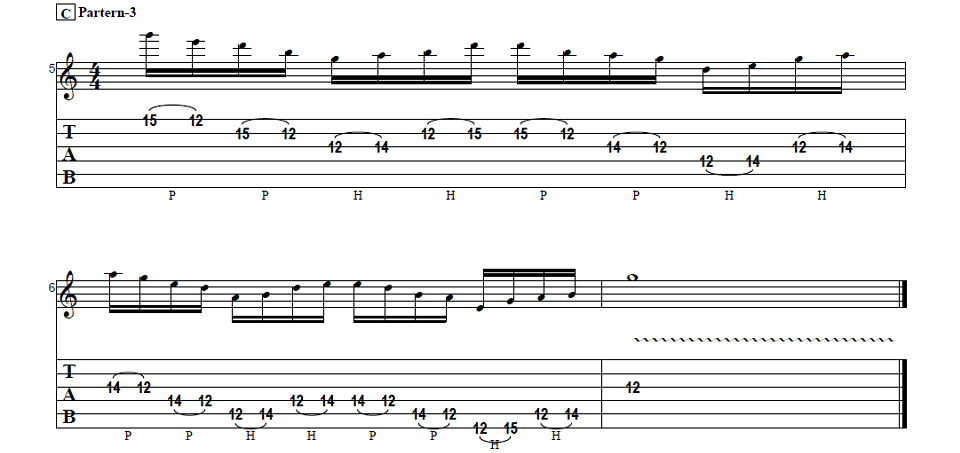Hey, how’s it going this is Robert Baker with Guitar Control, we’re here chilling out rocking trying to figure out “How to move around the fingerboard”, now I have three different ideas and different way to navigate through the fingerboard you know it’s a constant goal for guitar players including myself is always trying to find new ways to get through, so I have this three different ideas – maybe if you’re stuck in a root or something like that or just kind of looking for something a little bit differently maybe you normally use, let’s go ahead and get to the lesson.
Example number one is a trick I talk about all the time on here I’ve done other examples similar to this one and it’s using our octaves so we’re going to do all three of these to keep A minor and there are ways of moving around the A minor scale, so you give you a very basic one which is what we’re going to do and I’m going to show you a little more of an advanced one so I guess there’s like two examples on this one so the first one is just pretty simple just using the 1st 6 notes of A minor we’re going to go 5, 7, 8, on the low E in the A then we’re going to shift down and go to 7, 9, 10, on the D and G and then 10, 12, 13, on the B in high, so that will give you an octave and you can see how much space it kind of covered then you’re going to decent at 13, 12, 10.
For picking it’s up to you, you get alternate pick if you wanted to which just be down, up, down, if you watch my hand as I do this kind of thing I go down, up, down, down, a little bit of a sweep almost so on that would be that kind of first half example. Now to create a little bit more of a challenging one we’re going to go like this so now we’ve really turn it into a lick so I’m just going 5 to 8 on the low which is a hammer-on then I go to the A-string and I go 5 hammer-on 7 pull off 5 and go 8 on the low E and 5, 10, come seven on the A, shift up an octave do the same thing I’m going to 7 to 10 and then 7, 9, 7, then to 10 and then 7 here on 9 and G, move up again and I’m going 10 to 13 on the B and then 10, 12, on the high string.
So as you can see it’s an easy way to move around and there’s a million different patterns you could come up with, let’s see another one I get this one up top of my head so on the first one is using your octaves and thinking outside of the box with them a little bit so example number two what you going to do we’re going to focus on our scale but a lot of times the focus is put on moving across all six strings and what we wanted is we’re going to focus on 2 strings which to be in the high E-string so it’d be 5, 6, 8 on the B. I’ll go ahead and play it off for you once before I walk you through it, so what I’m doing there is I’m literally using my scale but only on two strings so we’re going to be 5, 6, 8 on the B, 5, 7, 8 on the high E-string and go to the next 6, 8, 10, 7, 8, 10, next one is 8, 10, 1, on both strings next is 10, 12, 13, on both strings then you’re going to go 12, 13, 15 on the B, and the high E and then last but not the least 13, 15, 17, on the B in high and I’ll turn to pick it all when I’m crossing a lot of strings that tend to use that kind of picking when I alternate A then of course I’m always saying in videos that anything you can send you have to decent so you want to flip that one around the other way and then decent is good we can do both another 3rd and final example is I’m utilizing arpeggio so you don’t have to be doing the crazy you know big giant six string our page deals all over the place to utilize the idea these are pages and I love them because it’s a I guess a different way of going through the strings like we kind of did this more vertical approach we did a horizontal approach and this like our pages are very like diagonal and I love that because it’s just a new way of kind of like carving your way through the through the scale so we’re going to go in like this
so I’m starting right here and fifth time 5 on the GB and high E and then 8 on the high E then I’m sweeping these you by all means you can alter picks if you want to this is not a sweep dependent exercise just how I play them, I should say now I’m not 8 I’m going to play it up to 12 I pull off to 8 again and I go to 10 on the B and 9 on the G I’m at 10 back to A, now what I’m doing here is I’m going from A minor sliding up to A minor you don’t always have to be changing chords there’s nothing wrong with that but for now we’re just going to stay A minor to A minor. Now from that twelve I’m sliding up to 17 I’m going to pull up to 12 and go to 13 and I go to 14 back this 12 that’s right back to 13 backs 12, 17, up to 20 and I go 17, 17, 17, and on an a note somewhere, that is going to do for us here today thank you so much for tuning in. Like I said before make sure you get those tabs like I said just some useful ways of kind of just moving around and playing the wrong notes like me just moving on that fingerboard so other than that I will see you next time have a great day and I’ll see you later


